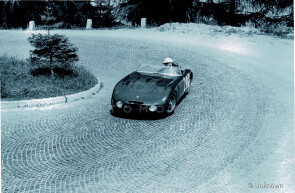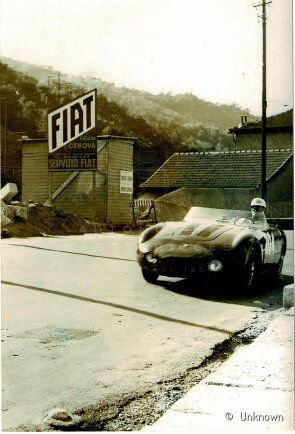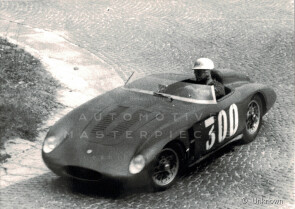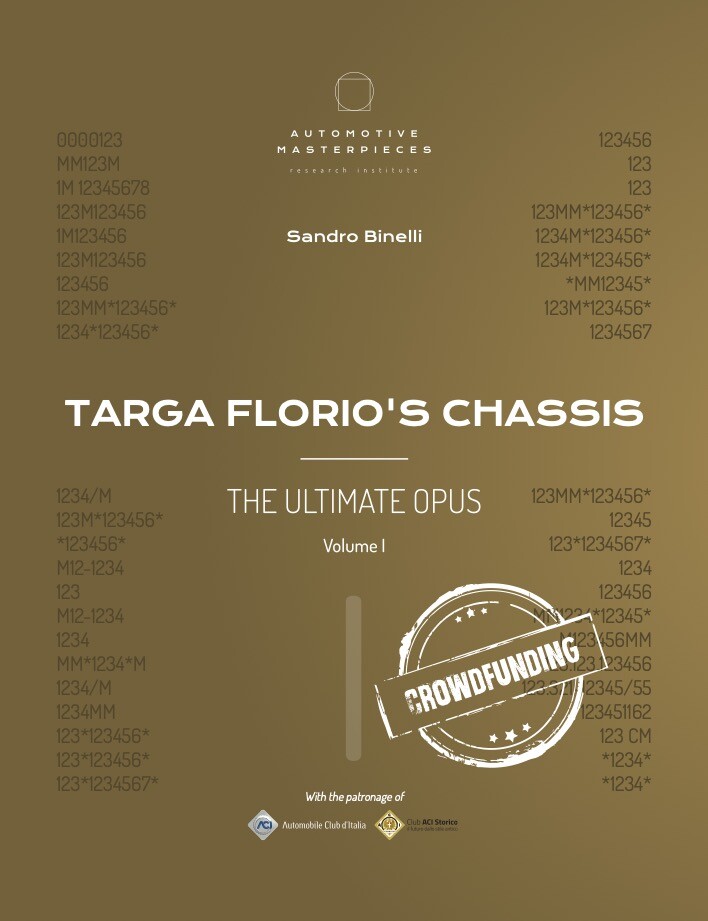
1956 O.S.C.A. S-187
ON/OFF
Why am I an Automotive Masterpiece?
G. Team cars
Scuderia Madunina (I), Scuderia Sant'Ambroeus (I)
H. Works cars
O.S.C.A. (IT)
L. Limited edition cars
no. 19 manufactured
In 1937 the three surviving Maserati brothers, Ettore, Ernesto and Bindo, sold out to the Orsi Group in Modena to avoid bankruptcy. The assignment contract included a ten-year consultancy for the Maserati brothers. After that period, in 1947, they decided to come back to San Lazzaro di Savena, near Bologna and found the Officine Specializzate per la Costruzione Automobili Fratelli Maserati S.p.A. – O.S.C.A. for short – to build limited edition competition cars. The Maserati brothers were real racers, and their little O.S.C.A.s built, were real racing cars, the ultimate expressions of a long line of outstanding cars that bore their name, beginning in 1926. O.S.C.A.'s first automobile was the MT4, for Maserati Tipo 4 cilindri. The MT4 was OSCA's most prolific model, but the company also produced a variety of models in both single and two-seater configuration fitted with four, six, and even twelve-cylinder engines, from 750 cc to 4500 cc.
Ahead of the 1956 season, the Maserati brothers developed a new competition O.S.C.A. for the class within 750 cc, really widespread in Italy. The sports car was called S-187, in reference to the unit displacement of the new engine, as per Ferrari naming practice. It was equipped with the O.S.C.A. smallest engine ever made, a four-cylinder square layout with a bore and stroke of 62 mm, for a displacement of 747 cc. The small unit had nothing to envy to the larger O.S.C.A. engines: the new S-187 was equipped with two overhead camshafts and powered by 2 generous twin barrel Weber carburettors. The whole produced the remarkable result of 70 hp. The Maserati originally envisioned the S-187 to be built around an elaborate, but relatively light and stiff, multi-tubular space frame. However, they were forced by time and money constraints to go back to the traditional ladder frame albeit with large diameter oval spars. The front suspension complied with the typical O.S.C.A. design, with double wishbones and coil springs up front, while, at the rear there was a traditional live axle. For the first time on an O.S.C.A. racing car, anyway, leaf springs were replaced by coils. The light and aerodynamic body was the work of coachbuilder Morelli. The attention paid to the design and construction of the S-187 immediately gave excellent race results, and the car proved to be fast and competitive. Among the first successes: a class victory at the 1956 Mille Miglia, with Ovidio Capelli at the wheel. The victory was repeated in 1957, when another S-187 won its class at the 12 Hours of Sebring. In 1959, the Maserati brothers updated the car to keep it competitive. Much of the attention was paid to the engine, with reversed exhaust and intake ports and revised bore and stroke. The S-187N (for “new”) engine had another 5 hp high revving at 7700 rpm. In this way, the small racer continued to be successful in Italy and internationally up until the 1960s. In all, nineteen S-187s are believed to have been built.
The history of O.S.C.A. S-187 chassis no. 751 is that of a car that raced a lot in its early years. Finished in April 1956, it was destined to be an official car and will race with three leading names: it will be Louis Chiron's car at the 1956 Mille Miglia, it will race with Giulio Cabianca at the 6 Ore di Castelfusano (1st in class) and at the Premio Modena, while with Gigi Villoresi it faced the Targa Florio and the Coppa D'Oro delle Dolomiti (1st in class). The following year it was purchased by Gemma Bigatti, on behalf of the driver Giancarlo Rigamonti, who used it for the 1957 season with excellent results: he was also 1st in class at the Mille Miglia, repeating the identical victory of a sister car the previous year, driven by Ovidio Cappelli. He was 1st in class also on other tracks always with the small and “angry” barchetta. Rigamonti keeps racing with chassis no. 751 also in 1958 and 1959, proving to be almost unbeatable in its class, but also placing excellent results overall. Peculiar of S-187 no. 751 were the extremely tapered lines of the body, so that, as a note of folklore, the car was surnamed “tubo di dentifricio” (toothpaste tube) due to the flattened shape of the tail. Another characteristic of the specimen were the 3 side air vent slots on the fender, between the wheel arch and the door (photographed at the 1956 Mille Miglia) which will be doubled for the following Mille Miglia. In 1960 the car returned to the O.S.C.A. in partial barter of a Formula Junior. The car is updated with the 187N type engine and crosses the ocean for a second life in the USA, where it remained until the end of the 80s. It returned to Italy in 1990 to face once again the roads of the Mille Miglia, this time re-enacting. In the mid 90s during the restoration, the car found again its original and matching engine unit, 751 AL. From that moment it remained in Europe, becoming part of important collections.








